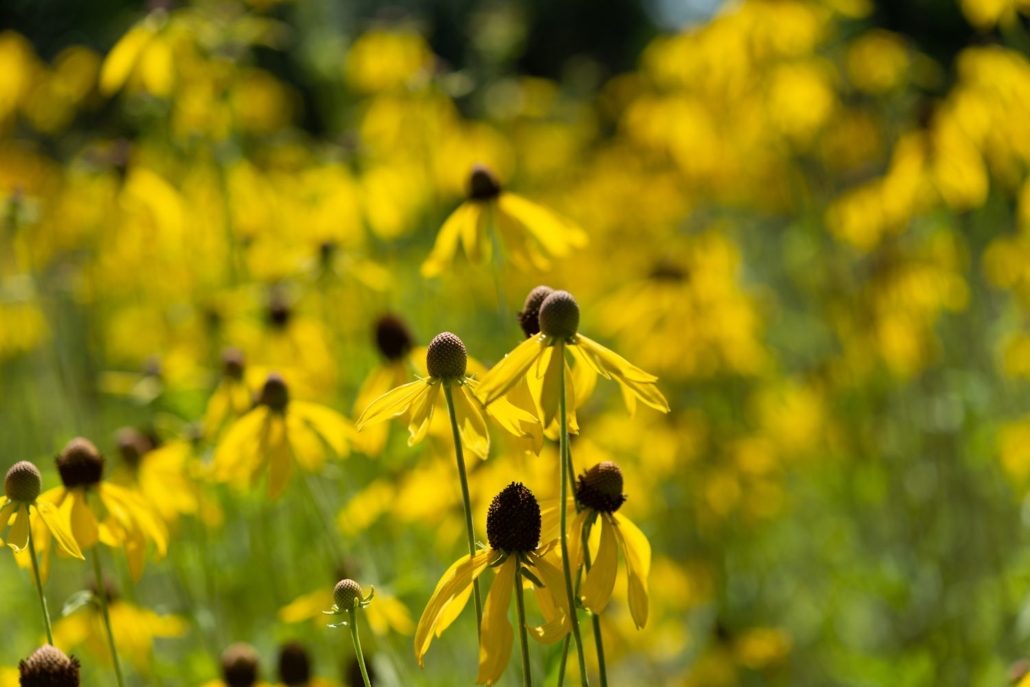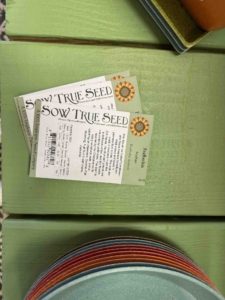On The Land:
Sochan
Western North Carolina’s Native, Perennial and Edible Green
BY CHRIS SMITH
***
In 2013 I took part in a permaculture design certificate course at Earthaven Ecovillage, and at the end of the program we organized a gift exchange. I brought seeds because they are the perfect gift of abundance, especially for garden folk and seed savers. In return, I received two small sochan plants from Alexander Meander, owner of Feralwood Nursery in Kings Mountain, NC.
I didn’t have a relationship with sochan at the time, but the plant turned out to also be a gift of abundance and quickly became a personal favorite in my garden.
Botanically, sochan is Rudbeckia lacinata, which puts it in close relation with other East Coast natives, the most common being black-eyed Susans (Rudbeckia hirata) and a little more distantly, purple coneflower, aka echinacea (Echinacea purpurea).
Sochan is also known as green-headed coneflower and cutleaf coneflower, and in late summer produces large quantities of small, yellow-petaled blooms a little like miniature sunflowers.

A field of sochan, also known as cutleaf coneflower
When I stand and watch my sochan patch at peak flowering, I am always overwhelmed by the sheer number of insects visiting the flowers. Pollinator potential? Check!
I planted those two small gifted plants beside a young paw-paw tree back in spring 2014. My soil is the typical red clay of the region, but native plants know this soil well. I’m not great at attentive gardening, so once they were planted, those baby sochans were on their own!
Ten years later, and I have a sochan forest. The abundant flowering leads to abundant seed production, which has meant a slow spread across my garden wherever there is space and sun for seeds to send out radicles (the first seed root) and then roots. I personally welcome this sochan spread, but take heed: Sochan is a self-seeding perennial with a borderline aggressive personality, and it can grow as tall as 10 feet before being killed back by frost each year.
For all its pollinator props, the main reason I’m enamored by sochan is its edible leaves. Sochan is a much-loved foraged green of the Cherokee and has a long culinary history as a Native food. It’s one of the earliest greens to pop up in spring and still has harvestable leaves deep into fall. The leaves start the season mild and tender and gradually become tougher and more intense in flavor, but they remain edible all the way through.
Traditionally, sochan is treated like any leafy edible and can be cooked together with other foraged greens like nettles and lambsquarters. I throw bunches of sochan leaves into soups and stews; I’ve stir-fried them with summer squash and cherry tomatoes; and I love wilting the tender greens like spinach to fold into an omelet or quiche. As a cooked green, they are very versatile. Sochan leaves can also be eaten raw in salads or smoothies, but it’s not my favorite way to enjoy them.
Sochan can be started from seeds (Asheville-based Sow True Seed carries them), and as a native perennial they’ll benefit from cold stratification (a period of storing seeds at cold temperature to break dormancy) to help with germination.
If you have a friend growing it, then they’ll likely have as many volunteer plants as I do, and it’s easy enough to dig up and transplant a baby or two. I also see sochan sold in local nurseries and garden centers.
If you don’t have a garden in which to grow your sochan, you can easily find it along forest and stream edges. I’ve seen it growing wild in the Bent Creek area and alongside the Big Laurel Creek in Madison County.
While you’re learning to recognize sochan, be sure to identify it correctly, preferably from a friend who already knows it well! Once you have a relationship with the plant, then it’s hard to mistake, and you’ll have an abundant perennial green to add to your diet.
Save
Save
Save
Save
Save
Save
Save
Save
Save
Save

Sochan seeds at Sow True Seed
THE WEEKLY REVEL
Sign up for your free handpicked guide to enjoying life around Asheville.
Available weekly from May to October.





